Squirrel Removal in Columbia, MO
The eastern grey and fox squirrels are the most popular species in Columbia, Missouri. For both species, their natural habitats are in wooden areas nesting high in trees between branches. Squirrels are commonly found in the area in attics, chimneys, and eaves around the home. They are most active in the spring and fall when they search for shelter and food.
Squirrels navigate their way through treetops seamlessly, so the pests have no problem climbing onto roofs, into soffits, or inside chimneys.
Squirrel Trapping
Removing squirrels can be very tricky since they run, climb and jump very quickly. While technically allowed to catch squirrels with nets or catch poles, it is nearly impossible. Squirrel trapping is one of the safest and most effective squirrel removal strategies.
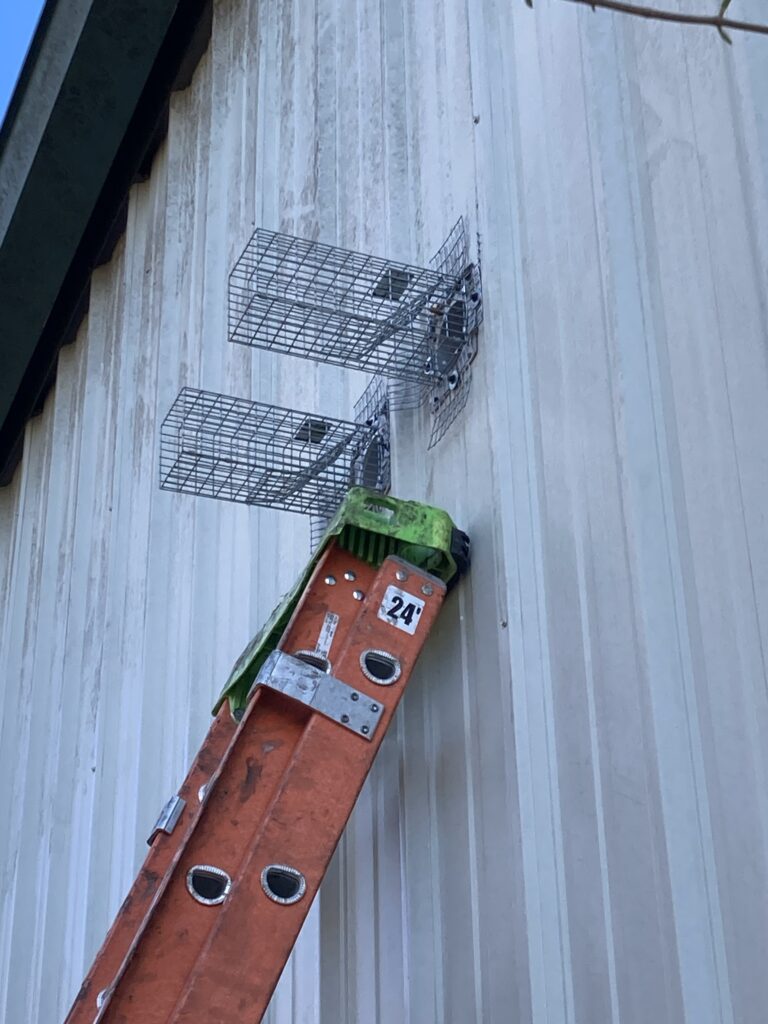
The best squirrel trap is to use a 5- x 5- x 18-inch (minimum) cage or box traps. Box traps are built with solid walls usually of wood, plastic, or sheet metal. Cage traps are made of wire mesh. For squirrels, use a cage trap from ½- x 1-inch mesh.
Both live traps can in either one door or two door traps. Snap traps or mouse traps glue traps will not work on most squirrels.
Where to Place a Squirrel Trap
The best place to set these traps are near the entrances to your home or near evidence of squirrel activity. Signs of squirrels include dropping, runs or tracks in the insulation, gnaw marks, and squirrel nests. Do not rely on bait to overcome poor trap placement.
At Critter Control, we usually set more than one trap. For larger squirrels, we set two or three traps. For smaller, squirrels as many as five or more might be necessary. We typically use a cage trap in conjunction with an excluder. It is a one-way door that allows the squirrel to exit but prevents the return. In these circumstances, we check the trap regularly to safely release the squirrel.
Squirrels on Roof
Squirrels are excellent climbers and can easily gain access to your roof by climbing downspouts, running along telephone wires, or jumping from nearby trees.
Squirrels on your roof can damage it sometimes requiring expensive roof repair. Squirrels running across your roof can damage roof shingles. Gutters provide nesting materials which can lead to drainage problems. Once they have access to your roof, squirrels can find a way inside.
Squirrels only need a gap of 1.5 inches to gain entry through the roof. We find squirrel entry holes along fascia boards, on soffits, and through roof vents. When squirrels enter homes through the roof, sometimes they can get trapped or build nests in eaves. Once inside, squirrels can cause damage by chewing holes.
Squirrels in Attics
Squirrels have different motivations to enter your attic. Squirrels can have two litters a year. It will vary depending on what part of the country they live. Generally, a squirrel will have a litter in the spring and a second in the early autumn.
Squirrels do not hibernate. They do need a warm shelter that protects them from harsh winter weather. They gain access to attics by chewing holes above gutters or at construction gaps where dormers meet the roofline. Squirrels will also chew corners of trim or any weak area that gives them access to a shelter.
Squirrels in Chimneys
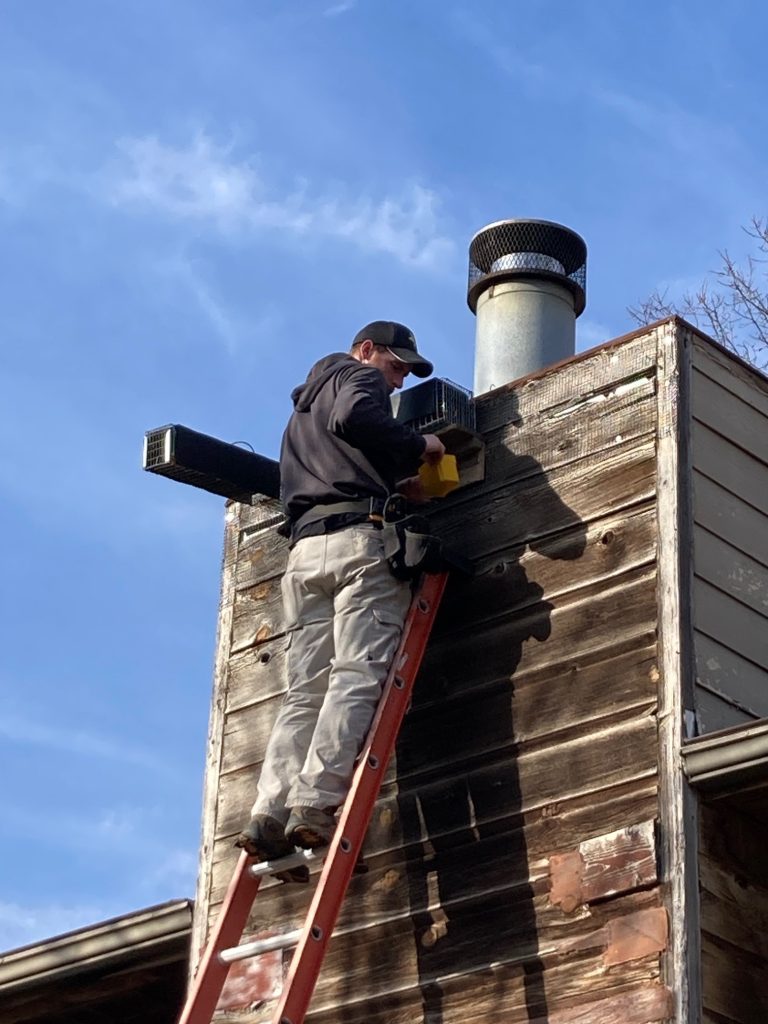
While squirrels rarely infest chimneys themselves, the pests may nest in metal chimney boxes. If a squirrel falls down a chimney and becomes trapped inside the fireplace, homeowners may be alerted to their presence via various sounds, smells, sights. Residents may hear chittering, fighting, or scratching at all hours of the day, smell squirrel droppings, and even see the pests running loose inside the home.
How Not to Get Rid of Squirrels from Your Chimney
If you notice a squirrel in your chimney, do not smoke it out! Rarely a squirrel will fall into your fireplace. Do not open your fireplace! Catching a squirrel with a net or a pole is incredibly difficult. The animal is quick and elusive.
Squirrel Removal from Chimney
Recently a homeowner noticed strange squeaking sounds in their fireplace. They were hearing squirrel sounds. We closed the flue and blocked some of the gaps in the chimney. We installed two excluder traps at the top of the chimney. Once the squirrels evicted themselves, we removed the squirrel traps and sealed the holes. We also installed a new chimney cap.


Squirrel Damage Before and After
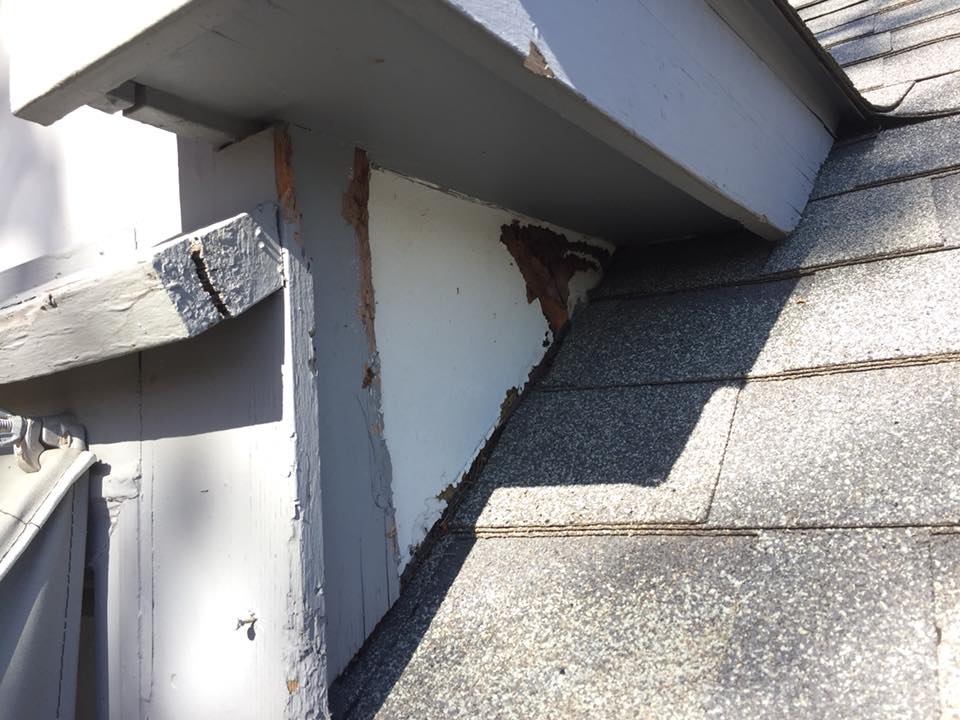

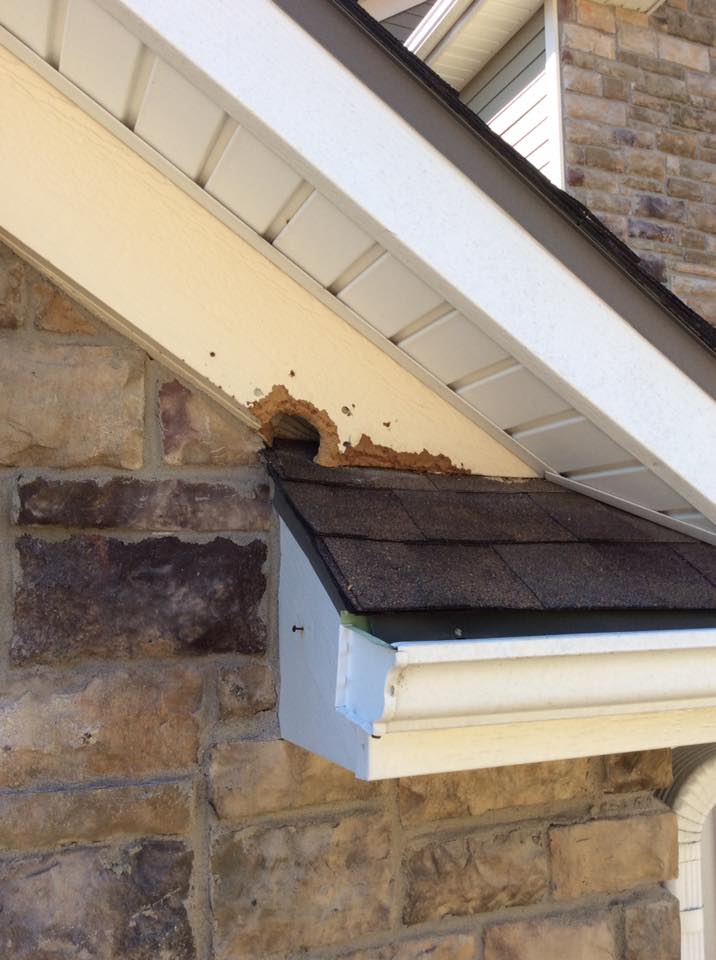
Squirrel Hole
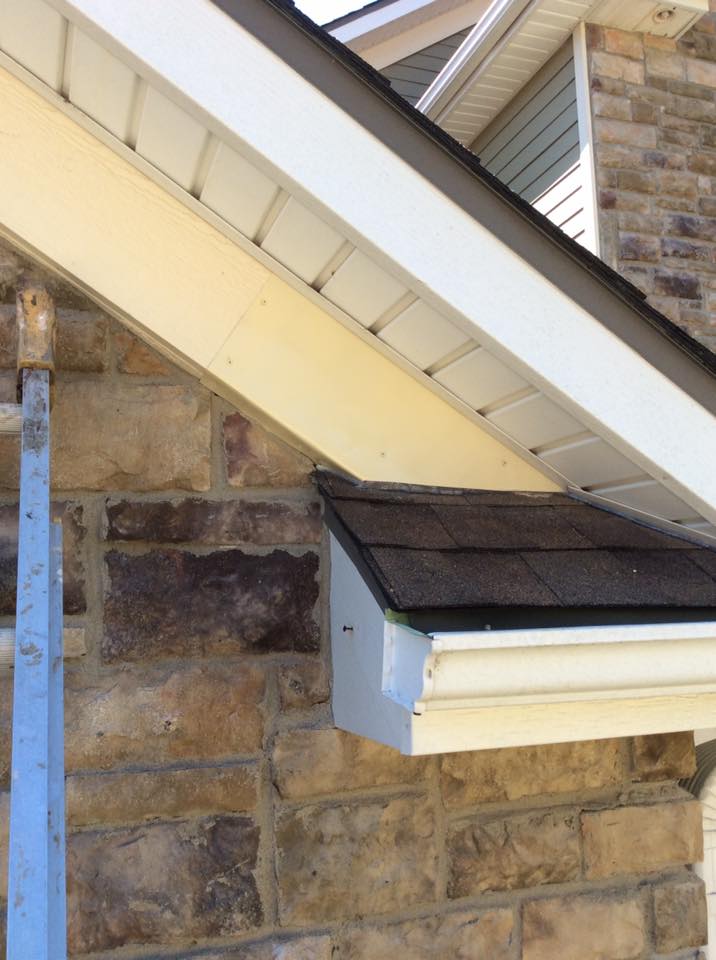
Squirrel Hole Repair